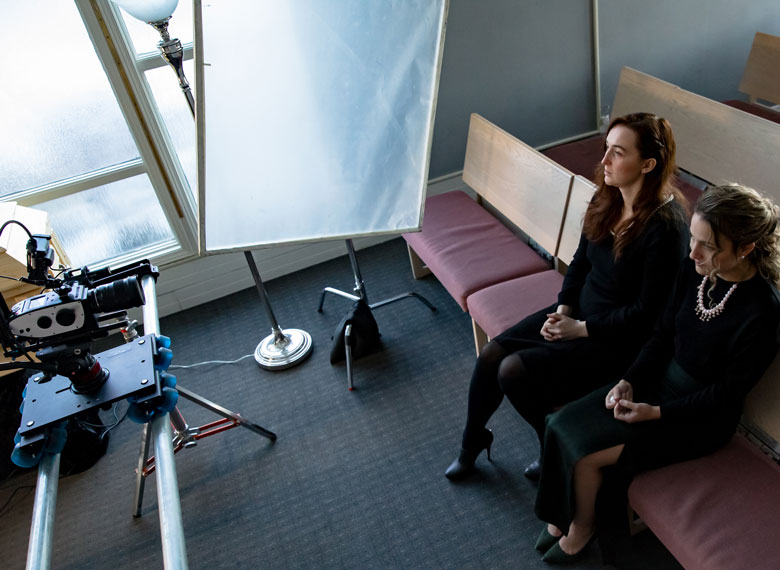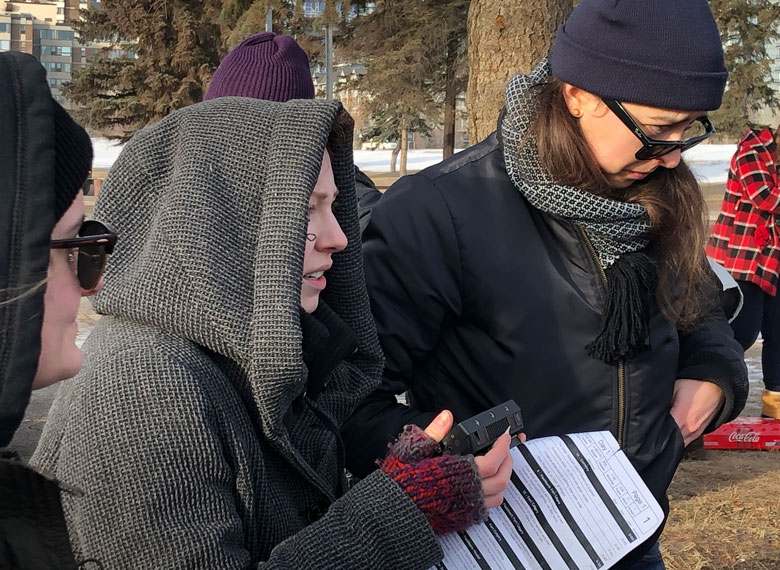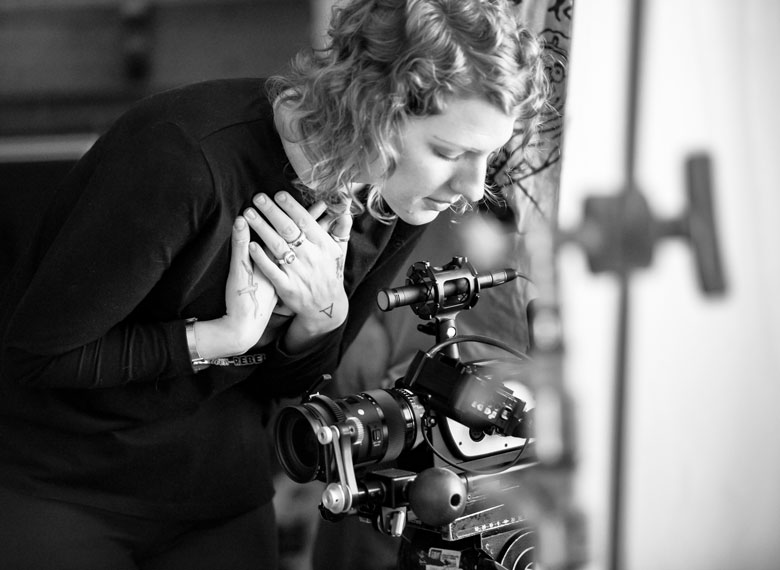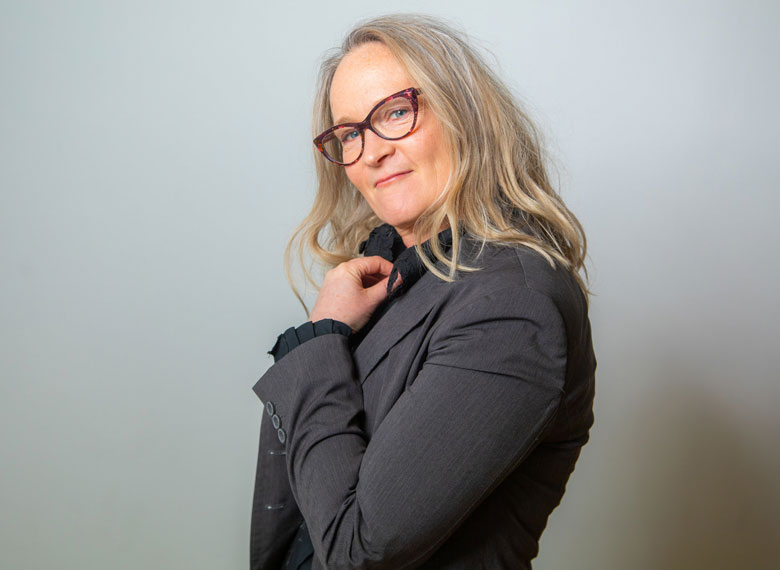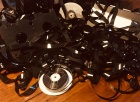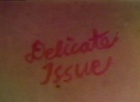Calgary filmmaker Sandi Somers has been a driving force behind Herland over its three decade history, often working in close-knit communities of women. When she recently visited a Herland set as mentor-in-chief, she was surprised to walk into a room of strangers, including several female crew members. “There's all these women who are walking around with tape hanging off their jeans,” Somers said, still glowing at the thought of there being enough women in the Calgary film community that she doesn’t know all of them. “They were all new and working hard and really well together.”1
Herland is an organization that seeks to bring films by and about women to a larger audience. Originally a festival, Herland is now focused on advancing women's careers in the film industry, providing workshops, mentorship, and education events to the local film community. It all began in 1989, when the Calgary Status of Women Action Committee joined with the Women of Colour Collective to host the first Herland Feminist Film Festival. In the early 2000s, Calgary filmmaker Sandi Somers partnered with EMMEDIA staffer Shauna Kennedy to launch a 10-day intensive program, the precursor to the current Herland mentorship program.
On a Saturday in early April, Ximena Rios and the 2019 class of the Herland mentorship program arrived at the Globe Cinema in Calgary to screen their mentorship films. The weeks before had been a flurry of post-production, and participants were looking forward to reuniting and seeing each other's work. The program has evolved to meet the changing needs of women in the industry. This was the first Herland mentorship to include a technical program, training female cinematographers, sound recordists, and editors.
Rios’ film, Faded, tells the story of an artist working through grief in therapy and at her easel. In an email interview, Rios writes, “My dad passed away when I was a kid and I was mentally and emotionally unstable in my teens. It wasn't until I started going to a psychiatrist that I learned how to deal with depression.” Filmed with a Red Scarlet digital camera, Faded uses subtle performances and deliberate pacing to create a meditative tone. It's a polished film, and getting there has been transformative experience for Rios.
When she entered the mentorship as a DIY filmmaker, Rios had never worked with a crew larger than three. Herland required her to think bigger. With a crew of 15 and access to better equipment, Rios says, “There’s no going back now, I’m never doing a project without a decent budget again. I really enjoyed having access to all sorts of gear that made the production so much better looking.”2
For Vanessa Wenzel, being selected for the 2019 workshop marked a milestone in itself. She remembers, “It was the first thing I got, the [creative] world accepting me. That alone is huge.”3Wenzel had worked in a camera department and produced her own films, but hadn't received grants or external recognition before. When she saw the opportunity to apply for Herland, she began adapting Escapism, a short story she had written for a creative writing course.
Escapism is a personal film for Wenzel, using quick cuts and dynamic camera work to depict mental illness and substance abuse. The film follows first-year university student Lake through a tumultuous relationship. Wenzel relishes the opportunity to bring a complex female character to the screen. After years of seeing stereotypical women onscreen, she aims to set the record straight about women in her own work.
According to Wenzel, the most valuable lesson from the mentorship is that “you cast your crew,” selecting collaborators behind the camera with the same care used to choose actors.4Wenzel enjoyed the opportunity to work with women on set and in the post process. She explains, “It was a story that was back and forth a lot. Zoe [Sherman, editor] helped me make it easier for the audience to understand.”5
The recent mentorship screening began with Lydia Adair's Errands, a multi-threaded film that examines the intersecting lives of people who meet in line at the bank. Adair’s narrative is challenging, using matching camera moves and sound design to weave together multiple points of view.
Faded was up next at the screening, followed by Sylvia Douglas’ Without, another film dealing with death in a family. Douglas turns the camera on a polyamorous triad. After the male partner dies, the two surviving women in the triad struggle with how to reinvent their relationship with each other. Douglas pointedly explores the universal experience of grief through the lens of a loving polyamorous relationship.
Ingrid Vargas' Bedroom Hymns is a highly entertaining experiment. She combines long, staged shots of a stuffy sleep scientist with wildly abstract footage to depict the experience of dreaming. Shot partially on Super-8 and with a 4:3 aspect ratio, Vargas’ work is sure to stand out in a festival setting.
Wenzel’s Escapism was up next, followed by Just Ask, a romantic comedy by Chantelle Anderson. Anderson’s lighthearted story follows a shy barista as she works up the nerve to invite a customer on a date. The final scene features a humorous drag performance, ending the evening on a high note.
Following the films, the Q & A session focuses on future plans. Most filmmakers are planning to take their films to festivals, and many already have new scripts underway. Rios stated, “One of my goals for this year (2019) is to be more active in this industry. I want to make and to be involved in as many projects as I can. On top of that, I really want to apply for a grant to fund a docu-series idea that I’ve had stuck in my head for a while. You’ll definitely hear a lot from me this year.”6
Wenzel is also looking ahead to future projects, and has this earned wisdom to give to aspiring female filmmakers: “Know that your work inherently has value.”7She advises to let go of worry about early films being bad, and to make them anyway.
In the early years of Herland, Somers attended the festival and knew the founders through feminist and film networks. She recalls: “I think Herland was doing so much to just give voice [to women]. Herland came from the place of standing strong in the belief that we deserve to have a space because there was no space for women in many of the festivals.”8
Somers remembers a far different political climate from today. Feminist films, especially those that openly dealt with women’s bodies and sexuality, were considered controversial by the mainstream. Criticism came in the form of censorship. When a film about lesbian identity brought threats to shut down the festival, Somers recalls political groups claiming they were enforcing “community standards.” She explains: “Anything that was outside of their community standards was wrecking community standards, which was just about everyone who wasn't in a traditional family.”9Despite its critics, the Herland Festival grew its audience to a peak of 1700 in 2003 and 2004.
The early festival organizers were filmmakers in their own right, including Sharon Stevens and Michelle Wong.10The founders saw the benefit of Canadian mentorships for female filmmakers, and were disappointed to see many of these programs come to an end in the late 1990s. They turned to Somers to start a mentorship program since she had directed a number of successful short films and also worked commercially in theatre and film production.
Beginning in 2000, Somers and Kennedy led a team that mentored nine women through a whirlwind production process every year. Somers remembers putting the call for applications out to as wide and diverse a group as she could. The inclusive nature of the workshop stood in contrast to censorship and exclusion that were common at the time.
“I think Herland was doing so much to just give voice [to women]. Herland came from the place of standing strong in the belief that we deserve to have a space because there was no space for women in many of the festivals.”
Filmmakers would shoot, edit, and screen their short films all within a ten-day period. This schedule was not without its adventures. The early Herland workshops alternated between the Calgary Society for Independent Filmmakers (CSIF) and EMMEDIA. While EMMEDIA workshops were produced on video, at CSIF they shot on 16mm, which needed to be processed in Edmonton in the middle of winter. Somers recounts, “There a few times no planes were flying and I had to drive [the film] up there, drop it off at midnight and pick it up at seven a.m. and come back the next day. It was tiring, but that's how dedicated everybody was.”11
After the first year, Somers realized she didn’t want to focus only on process, but on encouraging filmmakers to work respectfully. One workshop production led to a discussion of the topic of cultural appropriation. Somers remembers the incident as a teachable moment, and brought people in to facilitate that topic. She questioned participants about shooting without knowing the history and background of objects - and people - in front of the lens: “It was definitely wanting to make people aware that the world is not necessarily your oyster. How do we respectfully venture into work, into worlds that aren't necessarily ours? How do we do it conscientiously?”12
Through the early 2000s, the Herland Feminist Film Festival continued to screen both jury-selected and mentorship films. Then in 2007, the organization lost Canada Council funding and folded. Without the infrastructure of the festival, Somers closed the chapter on the mentorship program that had facilitated sixty-three short films. She continued to work as an educator with organizations such as Calgary Queer Arts Society (formerly known as Fairy Tales Presentation Society) and CSIF, and to produce and direct her own work. Somers remembers noticing that female friends weren’t getting grants and festival support, and tended to get discouraged and leave the industry. Meanwhile, she observed that in contrast, male filmmakers were thriving. With or without support, they continued to make films and build a production community.
Somers made it her goal to work against this pattern, and looked for ways to bridge the gap and bring women’s voices forward. She theorizes that emerging female filmmakers question themselves more, and work harder to accomplish the same goals.13Women also struggle under the burden of representation — since women are under-represented in film, any women who do succeed are pressured to represent all women, rather than being regarded as individual artists.
By 2012, Herland alumnae had long been asking Somers to bring back the workshop. CSIF production director Yvonne Abusow spotted a funding opportunity and encouraged Somers to apply. They chose to leave the 10-day format behind and instead conducted the program over a period of months. They hoped that giving filmmakers more time would allow them to make more considered choices and better simulate a professional working environment.
The following year, Herland guided a batch of new directors into their first short films. Somers assembled a team of mentors, and participants attended workshops in writing, producing, directing, camera, sound, and editing. They spent the final months of the program making their films, and were encouraged to support each other through the process. Many participants worked in crew positions on each other's films.
In 2015, the success of the first workshop was followed by a second mentorship for mid-career artists. Somers adapted the program for a more experienced cohort of directors, opening up more camera and post-production options, and focusing on creative development beyond the fundamentals. Five women graduated from that program and their films hit the festival circuit.
“Women have a sense of trajectory, and can see that they can have a career in the film industry. When we started the workshops in the nineties, I don't even know if that was even a consideration.”
By the time a third group completed their films in 2018, the impact of the program had started to become apparent. Past participants were securing funding and producing films. Somers remembers Vicki Van Chau making the transition from solo artist to producer, leading a crew, and applying for funding.14Gillian McKercher, who made her short Family Photo through Herland, debuted her feature film Circle of Steel last year.15
Somers believes that directors learn best behind the camera, and she has advanced her own career by creating the opportunities. “I made my own work happen so I could direct it,” she explains. “I wrote grants like you wouldn't believe. I did not wait for something to come to me.”16In recent years, Somers has directed her first feature, Ice Blue, and has received numerous awards, both for her art and her work in the community.17
The same practical attitude has allowed Herland to thrive in the competitive arts landscape. 2017 saw the formation of a new committee, and further funding paved the way for Herland to host a speaker series featuring female leaders in the film industry.
Somers describes herself as blown away by the competence and professionalism among the 2019 mentorship group. When asked to compare the present to the early days, she notes, “Women have a sense of trajectory, and can see that they can have a career in the film industry. When we started the workshops in the nineties, I don't even know if that was even a consideration.”18Now more than ever, with audiences seeking out diverse voices, Herland is prepared to support women in telling their stories onscreen.
For more information on the Herland Video Production & Mentorship Program and for upcoming events and programs, go to: http://herland.ca/


